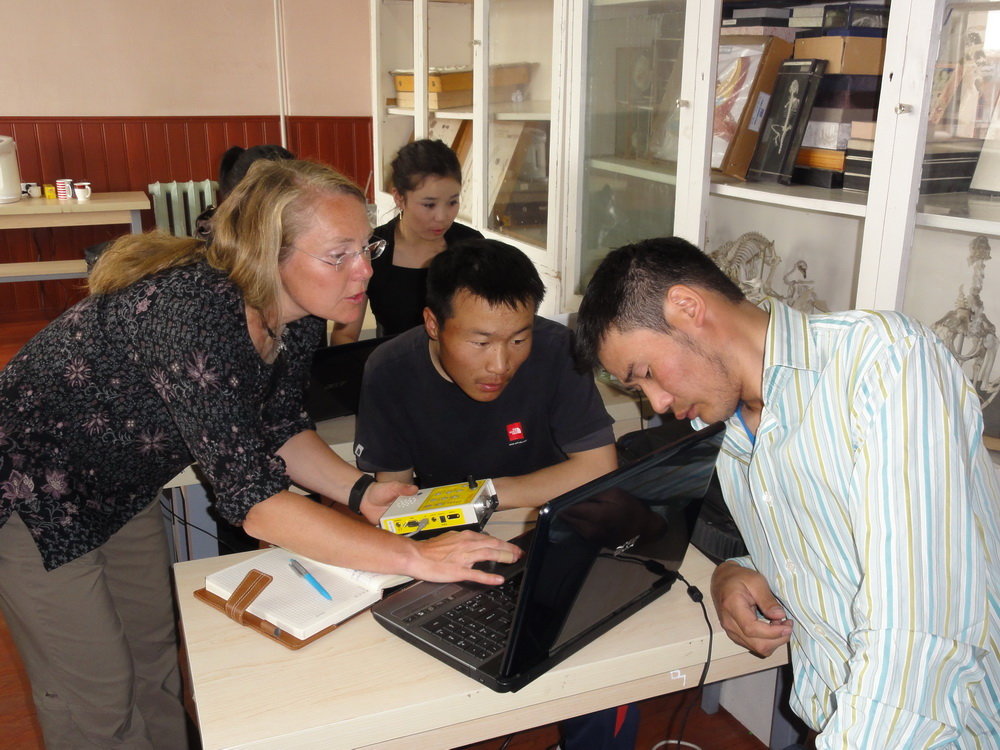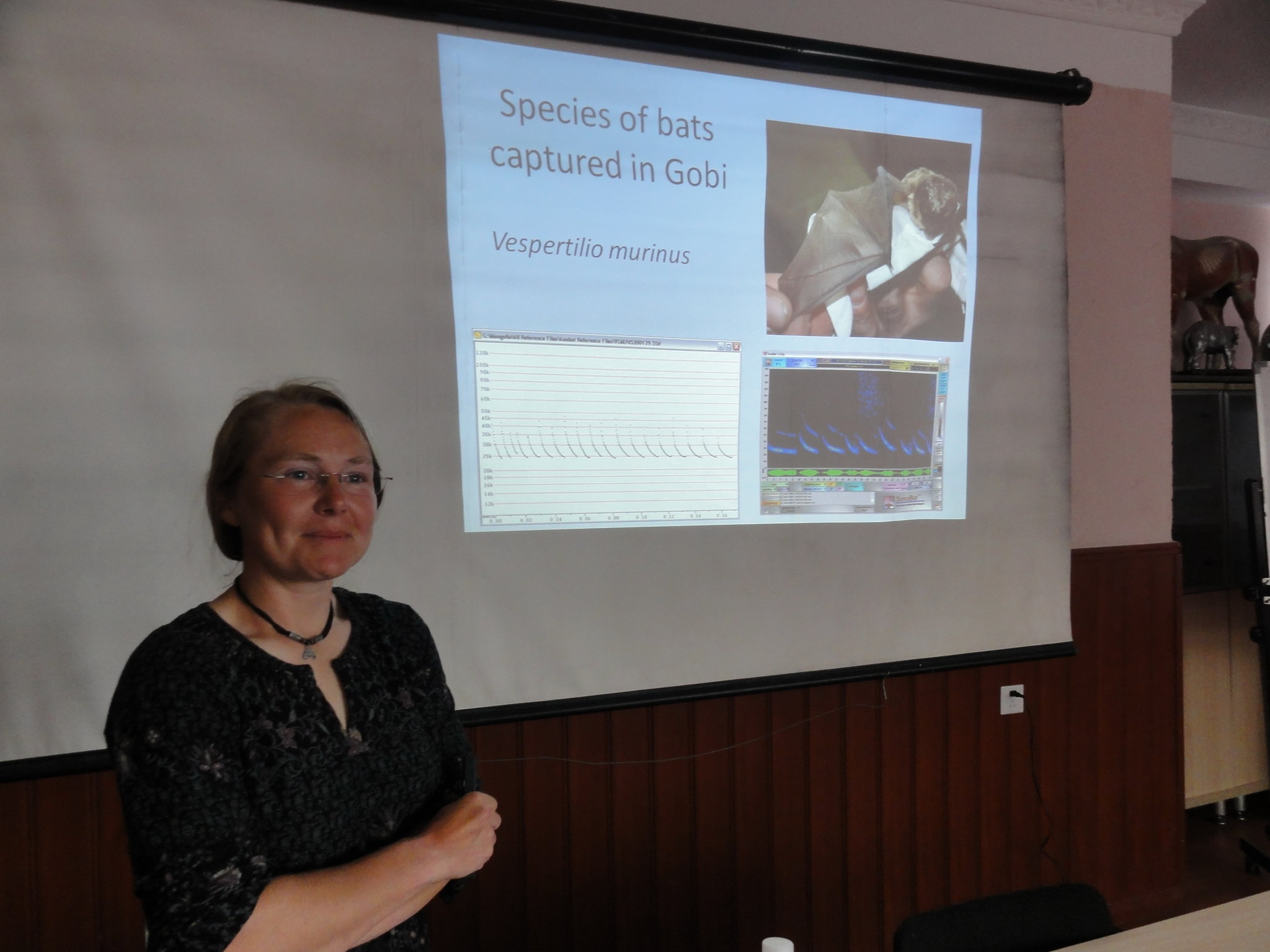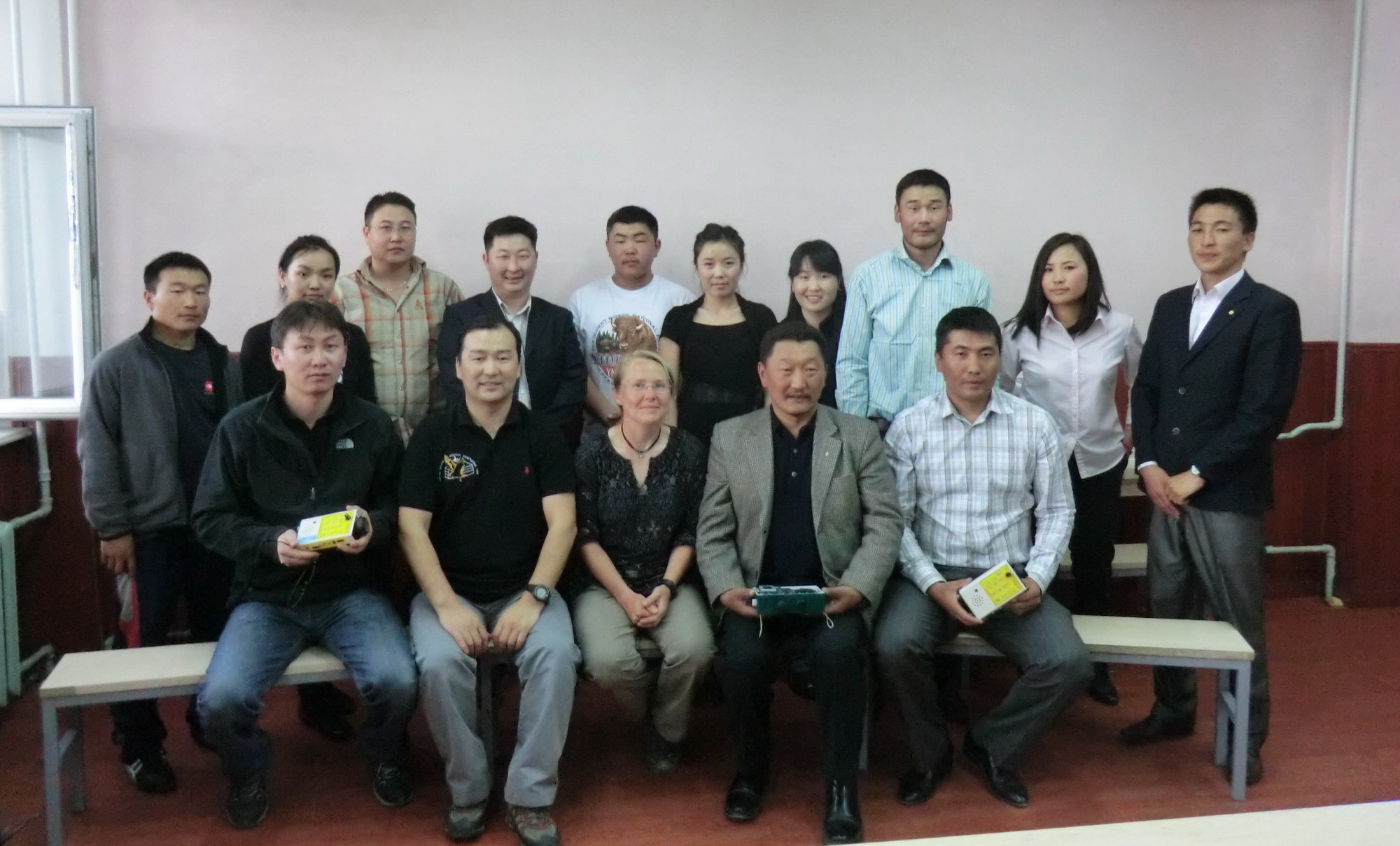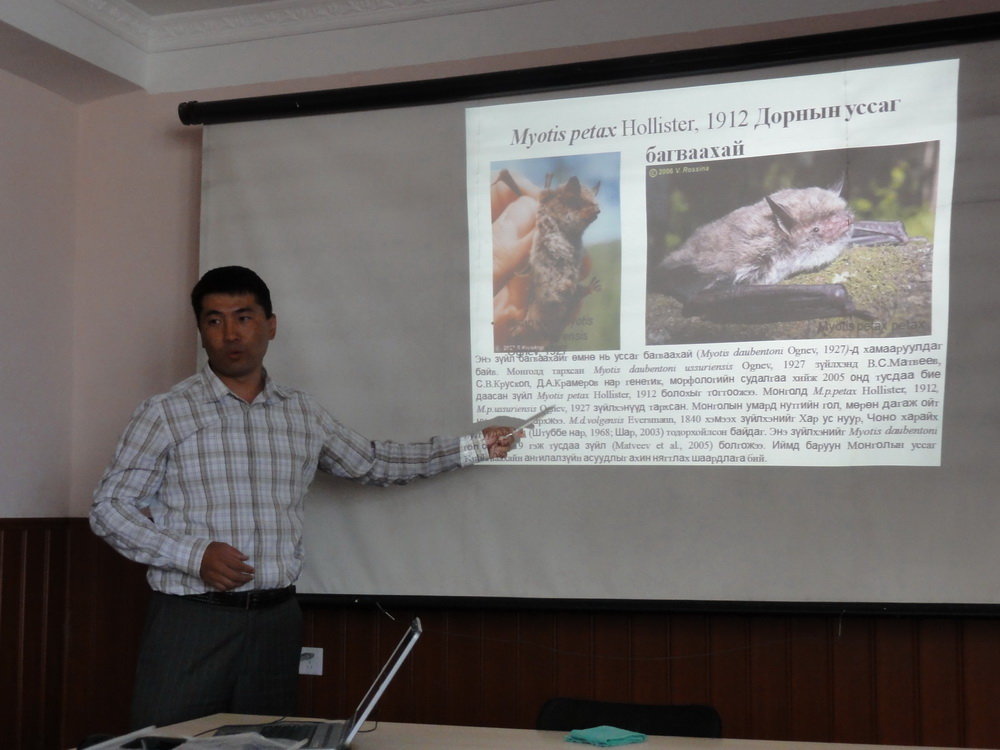Bats on the Mongolian steppe
Bats inhabiting steppe habitat require particular attention in Mongolia because of increasingly frequent droughts and the looming specter of global warming that could devastate their populations. Sadly, nearly half of known bat species in the country have been recorded in water-short, arid areas, such as the steppes and these populations are especially vulnerable.
Bat conservation is at a very early stage here in Mongolia due to a lack of the necessary, basic ecological knowledge and a still-limited awareness of their annual life cycles, roosting habitats, breeding, and the feeding/water requirements. A small project supported by Bat Conservation International enabled Mongolian biologists to begin some ground work on bat research and conservation in the arid steppe habitat of central Mongolia.
Mongolia’s 1st workshop for bats
A workshop on bat research techniques was held at the Mongolian State University of Education in Ulaanbaatar, Mongolia on 24th May 2011. This unique workshop brought together local researchers, students, and park biologists who are interested in bat research in the country for the first time. The workshop was focused specifically on bat echolocation and using acoustics techniques for bat research in Mongolia. Cori Lausen, a bat expert from Birchdale Ecological Ltd., Canada, led the workshop.
In Mongolia, only a few researchers study bats and the bat diversity of the country remains poorly understood. The workshop provided a rare, one-day opportunity for local researchers to share information, discuss bats, and learn about the current conservation and research status of the 20 bat known species in Mongolia.
The training part of the workshop used two types of bat detectors: zero-crossing and full spectrum. Participants practiced analyzing bat echolocation data recorded in the Mongolian Gobi by Dr. Cori Lausen and her Mongolian colleague Ariunbold Jargalsaikhan. Software and equipment used for the training were donated by the world’s leading bat detector and software manufacturers: Sonobat, Wildlife Acoustics, and Titley Scientific. At the end of the workshop, the equipment and software licenses were donated by the manufacturers to the Mongolian researchers for their future bat studies in Mongolia.
Dr. Batsaikhan Nyamsuren, a professor at the National University of Mongolia, said “We are so grateful to the organizers and especially Dr.Lausen for today’s workshop and most importantly for this equipment, the knowledge shared, and the practice gained in how to use the equiopment in the field and in lab research. This will definitely benefit our researchers and significantly advance our work on bats. We formerly had only mist nets to catch bats and calipers to measure them. Today, this modern and bat friendly technology has become available to us.”
Dr. Aruinbold Jargalsaikhan, a professor from the Mongolian State University of Education, said “I am really excited about today’s workshop. Also, I was the first person to use this equipment and collect bat data in Mongolia. I think we can do a lot of good research and data collection with this equipment.” Nyambayar Batbayar, director of the WSCC of Mongolia, says “Today’s workshop could be a historic event for the bat research community in this country. We never had an opportunity to sit together and share our common interests in bats as we did today. I am sure our bats will benefit from this workshop as well.” Dr. Lausen commented that “It was a real pleasure working with the Mongolian biologists. They have such a tremendous enthusiasm for bat conservation and for learning of new tools for bat research. I believe that they are going to make huge advancements in bat conservation and understanding bat acoustics in Mongolia.”
The workshop was well attended by students from the Mongolian State University of Education and the National University of Mongolia, and there was a great interest among students to participate in bat research and conservation projects.
Addtional information
STEPPE BATS OF MONGOLIA A ‘Grassroots’ study of diversity in arid plains. Bats 27:4(9-11), click here





